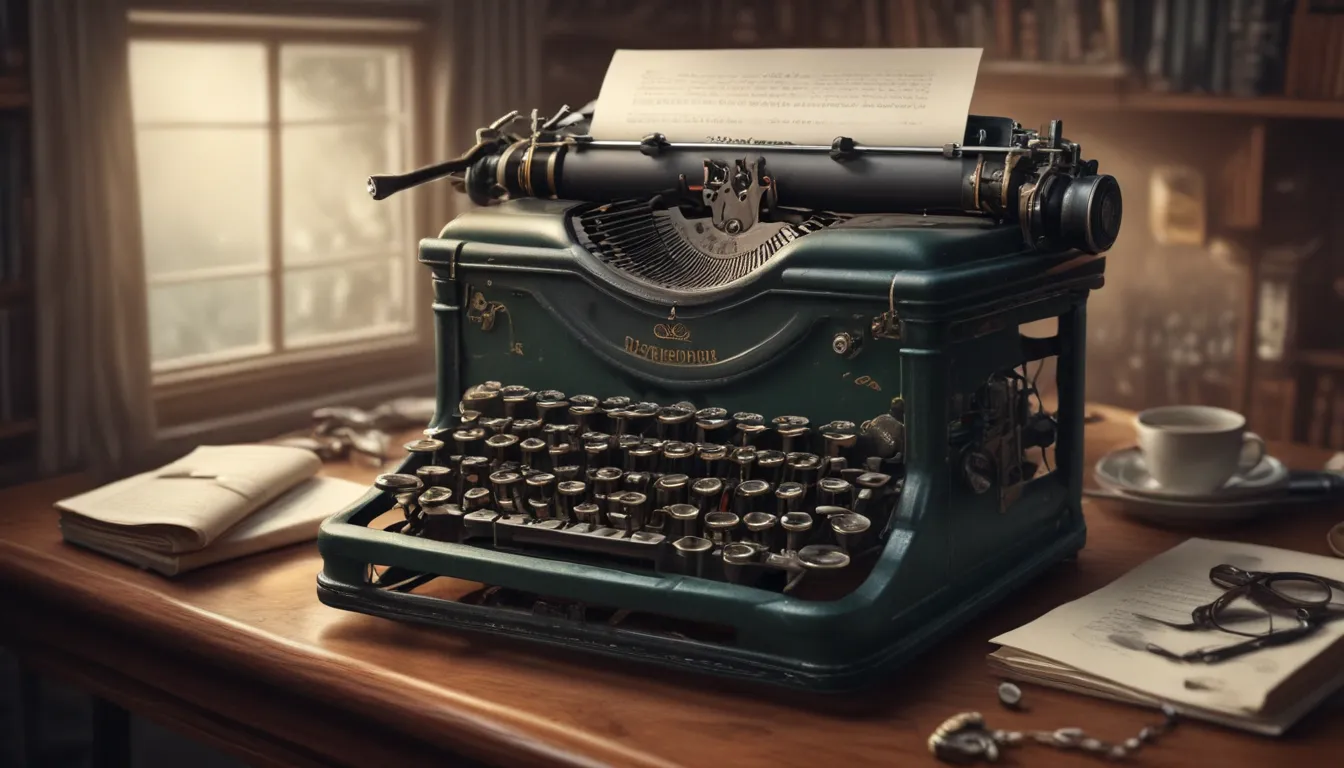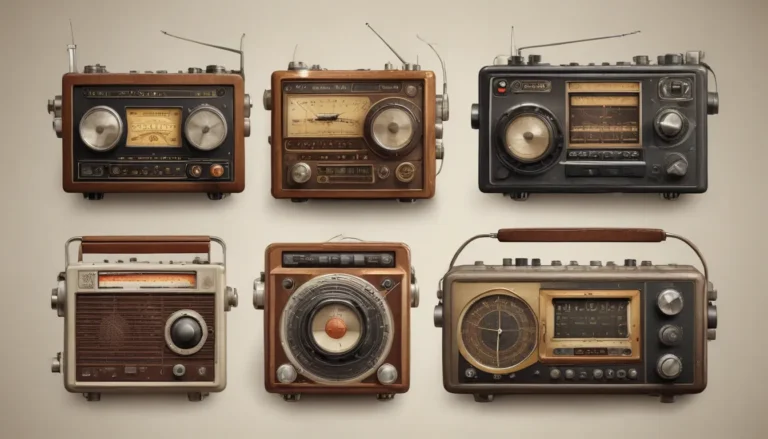A Note About Images: The images used in our articles are for illustration purposes only and may not exactly match the content. They are meant to engage readers, but the text should be relied upon for accurate information.
In the realm of communication and creativity, the typewriter stands as a symbol of ingenuity and progression. Since its inception in 1868, this iconic machine has revolutionized the way we write, impacting literature, cinema, and even women’s rights. As we delve into the intriguing world of typewriters, we uncover 20 fascinating facts that illuminate their evolution, influence, and cultural significance.
The Evolution of Typewriters: A Revolutionary Invention
The typewriter, invented in 1868 by Christopher Latham Sholes, Carlos Glidden, and Samuel W. Soulé, marked a significant milestone in communication technology. It enabled individuals to produce printed documents with unprecedented speed and efficiency, transforming the landscape of writing and publishing forever.
The Ingenious QWERTY Keyboard Layout
Designed to prevent mechanical jamming, the QWERTY keyboard layout strategically placed commonly used letters apart from each other. This layout not only reduced the likelihood of jamming but also allowed for smoother and more efficient typing, a key feature that has endured through the ages.
Typewriters: A Tool for Accessibility
In its early days, typewriters were marketed as a valuable tool for individuals with disabilities, particularly those with visual impairments. The machine’s ability to produce legible, uniform text made it a powerful instrument for enabling people with disabilities to engage in written communication and pursue professional endeavors.
The IBM Selectric Typewriter: A Game-Changer
Introduced in 1961, the IBM Selectric typewriter revolutionized typing technology with the first typeball. This innovative spherical typing element replaced traditional individual typebars, offering enhanced precision and speed in document production, setting a new standard for efficiency and accuracy.
Typewriters in the Golden Age
During the 1950s and 1960s, the typewriter industry experienced a golden era, with a surge in demand across various sectors such as businesses, government offices, and personal use. This period marked the pinnacle of the typewriter’s influence as the primary tool for written communication.
Typewriters: Pioneers of Early Computing
Before the advent of computer keyboards, typewriters played a crucial role in early computing systems. They served as input devices for early computer systems, laying the foundation for the keyboard interfaces integral to modern computing devices, shaping the technological landscape we know today.
The Resurgence of Typewriters
Despite the digital age, typewriters have experienced a resurgence in popularity among enthusiasts, writers, and collectors. Appreciating the tactile experience and nostalgic charm of these vintage machines, a thriving community has emerged, keeping the legacy of typewriters alive and flourishing.
Typewriters: Icons of Creativity and Expression
Beyond their practical function, typewriters have evolved into symbols of creativity, individuality, and personal expression. Capturing the imagination of artists, writers, and enthusiasts, these timeless machines embody a charm that resonates across generations, inspiring new forms of innovative expression.
Typewriters: Treasured Collectibles
Vintage typewriters have become sought-after collectible artifacts, revered for their historical significance, mechanical craftsmanship, and enduring appeal as tangible pieces of nostalgia in the digital age. Their unique designs and functionalities continue to captivate collectors and enthusiasts worldwide.
The Enduring Legacy of Typewriters
In a world driven by rapid technological advancements, the legacy of the typewriter endures as a reminder of the enduring power of human expression, craftsmanship, and innovation. While digital devices dominate the modern landscape, typewriters remain a cherished part of our cultural heritage, captivating new generations with their timeless charm.
Conclusion: A Tribute to Typewriters
Typewriters have left an indelible mark on the history of technology, shaping the way we communicate, work, and create. These fascinating machines have evolved from simple mechanical models to sleek and advanced versions, continuing to hold a special place in the hearts of collectors, enthusiasts, and admirers of vintage charm. As we reflect on the enduring legacy of typewriters, we celebrate their timeless appeal and lasting influence on our world.
In a rapidly changing digital landscape, typewriters stand as a testament to the enduring power of human expression and the beauty of tangible craftsmanship. Whether appreciated for their historical significance, nostalgic allure, or cultural impact, typewriters continue to inspire and captivate individuals across the globe. Join us in honoring the legacy of typewriters and embracing the timeless charm of these iconic writing instruments.
FAQs: Exploring the World of Typewriters
What are the different types of typewriters?
- Manual typewriters: Rely on mechanical power for typing.
- Electric typewriters: Utilize electric power for enhanced speed and efficiency.
- Electronic typewriters: Feature advanced word processing capabilities and memory storage.
Are typewriters still used today?
While not widely used for day-to-day tasks, typewriters remain cherished by collectors, writers, and enthusiasts. Some individuals and organizations still use typewriters for specific purposes, maintaining a unique and retro aesthetic in their writing practices.
As we navigate the fascinating world of typewriters, let us embrace their enduring legacy and timeless allure, celebrating the ingenuity and innovation that continue to captivate and inspire us. Let the timeless charm of typewriters fuel our creativity, ignite our passion for storytelling, and remind us of the beauty found in the analog craftsmanship that has shaped our modern world.






